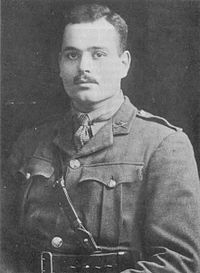Learn why the work of the father of group psychology from 70 years ago is so important to the leadership of a modern trial team.
Stories about a trial team breaking down at or just before trial are legendary. The breakdowns are typically triggered by some event that creates anxiety that then causes the team to engage in one of three progressively severe sets of behaviors:
- Deification of the Leader: Looking to the leader of the team to make the anxiety go away or the leader taking dictatorial control over the team;
- Fights and Departures: Fighting among members of the team or abrupt departures from the team;
- Coups: Two or more people plotting to overthrow the leader or change leadership.
These breakdowns follow something going wrong in or around the trial team’s work that produces fear. For example, I have seen trial teams slip into one of these behavior patterns after inter-team relationships are brought to light, when a judge discovers and makes public ethics problems on the team, when a client stops paying bills, when layoffs are being announced at the office, when something unexpected happens mid-case, when a team-member dies, when a ruling goes the wrong way or when the first chair is revealed to be unprepared, distracted or unqualified to try the case.
Ever see these things happen on a trial team or similar things happen to any team for that matter? Well, it turns out that these three behavior patterns were first described 68 years ago by the father of group psychology, Wilfred Bion. In my business career, nothing has proven more valuable than the knowledge Bion revealed, and for leaders of a trial team and the members of that team, learning a little bit about Bion can pay off enormously in the long run.
It turns out that the three patterns described at the beginning of this article are all increasingly severe subconscious group responses to anxiety and were described by Bion as:
- Dependence: Where the followers subconsciously act in a way that forces the leader to take action to make the anxiety go away. If that fails, the team subconsciously moves onto the second and more severe breakdown.
- Fight/Flight: Team members run away from the anxiety by fighting amongst themselves for distraction or try, as individuals, to escape the team altogether. As above, if this fails to make the anxiety go away, the team subconsciously proceeds to the next stage of breakdown.
- Pairing: In this, the most destructive of the subconscious responses, a pair of team members plots to replace the leader through secret meetings or to find any other way to run away from the anxiety en masse.
In the eyes of Bion, teams are either in productive work mode or they are in moving through one of these three states, collectively called Basic Assumptions. The sole purpose of going into Basic Assumption mode is to make anxiety go away, a response that is completely knee-jerk and subconscious. Perhaps, you will not find it surprising to learn that these rules apply to any team whether it is a trial team, an executive committee, a club or even a family.
One noted expert in human behavior, Robert M. Young similarly remarked on his experience with groups and teams, “My experience was that, sure enough, from time to time each group would fall into a species of madness and start arguing and forming factions over matters which, on later reflection, would not seem to justify so much passion and distress. More often than not, the row would end up in a split or in the departure or expulsion of one or more scapegoats. This happened all over the place -- in high school, college dormitories and societies, university departments, teams making tv documentaries, collectives editing periodicals, communes, psychotherapy training organizations. Every time this happened to groups of which I was a member I thought it was either my fault or that I had once again fallen among thieves, scoundrels, zealots, dim-wits or some combination of the above.” This probably sounds familiar, right?
So, what is the takeaway? I think Bion’s work is valuable to leaders of a trial team or leaders of teams of any sort for several reasons.
- First, if you know about Dependence, Fight/Flight and Pairing, you can always tell how far into distress your team really is by using these progressively worsening stages as something of a measuring stick.
- Second, the leader should learn to keep their head, no matter what. For once a leader loses control of their own emotions, they too have succumbed to the Basic Assumption. Thus, one job of a leader is to constantly increase their own capacity to handle anxiety and to the extent possible, help their team increase their capacity for managing the stress.
- Third, there is actually a way for a skilled leader who has a team with enough emotional intelligence and intellectual strength to help pull the team out of Basic Assumption mode and return to productive work mode. Like many leadership lessons, however, it is simple, but it is not easy. All a leader needs to do is to force the group to talk about the thing at the root cause of the anxiety. With enough conversation and the right people, the team can return to productive work.





Leave a Comment